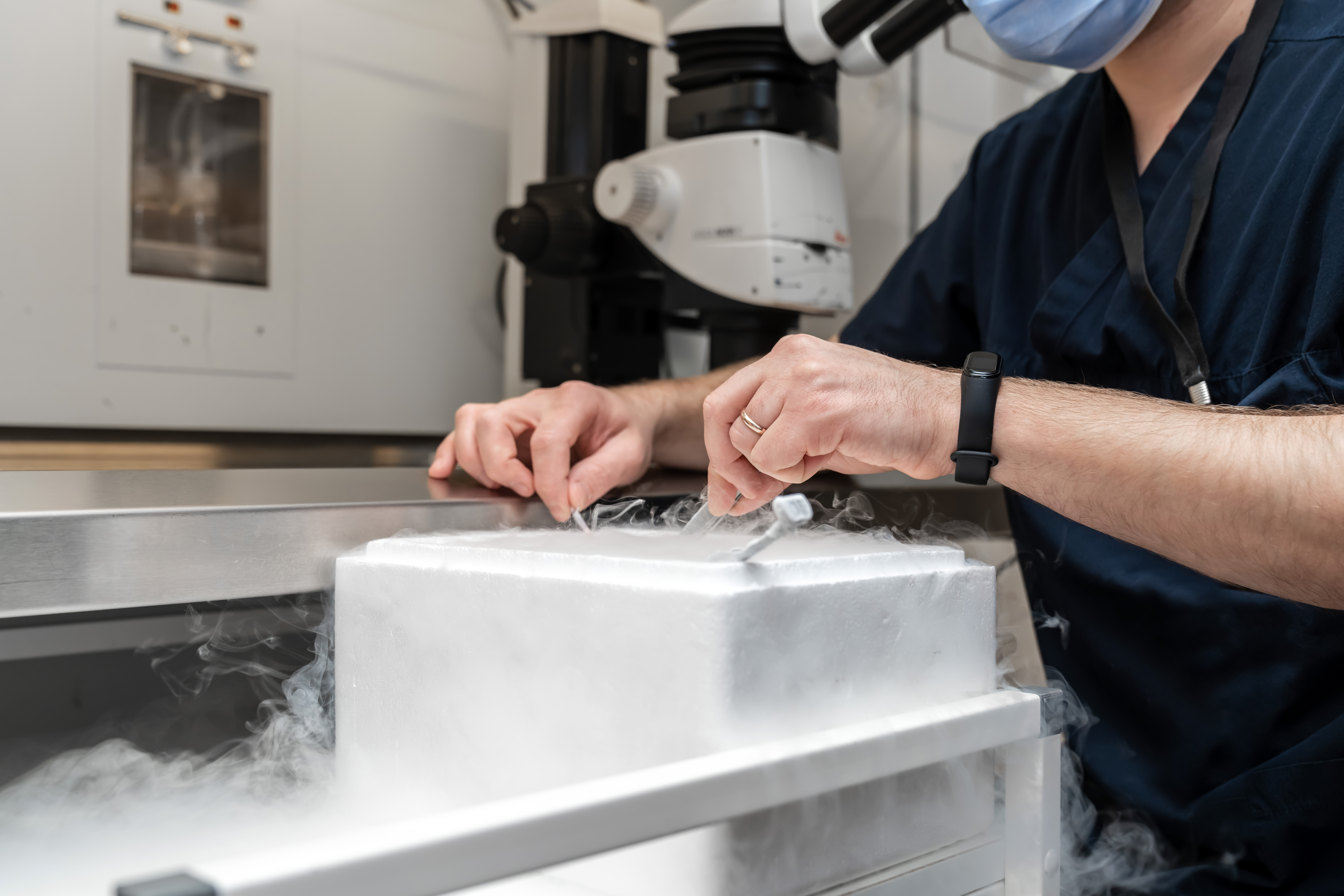Here at Natural Womanhood, we’ve touched on pelvic floor physical therapy (PFPT) several times, covering how it can be helpful in treating pelvic pain, why every new mom should have a postpartum assessment by a pelvic floor physical therapist, and how PFPT along with tracking your cycle may help if you’re experiencing painful sex before your period or painful sex related to endometriosis. Here we’ll offer a 360- degree wraparound view of how PFPT can be beneficial for treating a wide variety of issues across the reproductive lifespan. While she’s treated patients as young as 5 and as old as 90, pelvic floor physical therapist Dr. April Ritz of Effingham Pelvic Health and Wellness shared specific examples with Natural Womanhood of what PFPT can offer women experiencing pelvic pain or painful sex, pregnant women, postpartum women, and perimenopausal or menopausal women. An exhaustive list of the bowel, bladder, and reproductive issues PFPT can treat- in both men and women- is available on her website.
Pelvic floor physical therapy for painful sex
Ritz shared an example of a 25-year-old woman, newly married, who sought PFPT because having sex hurt. For years, the young woman had used pads during her period because tampons hurt too much. And while routine gynecological exams are seldom enjoyable for any woman, this patient experienced outright pain when she received a speculum exam as a teen.
Identifying the source of the pain
Ritz noted that pelvic pain in general and painful sex specifically can result from tightness of external pelvic floor muscles around the labium majora and the perineal body (where pelvic muscles attach to the perineum, the small, thin-skinned space between the vagina and the rectum), or of deep internal muscles. Women who experience painful sex may suffer from vaginismus, involuntary muscle spasms whenever something is inserted in the vagina, or vulvodynia, which Ritz classified as more like an irritation or inflammation of the skin at the vaginal opening.
What a PFPT assessment is like
During an initial pelvic floor assessment, which lasts between 1 and 2 hours, a pelvic floor PT (who is a physical therapist who has undergone specific pelvic floor training) will test external muscle strength and tightness, and in many cases perform an internal exam (with the patient’s permission, of course!). While many women are apprehensive about what an internal exam might entail (especially if they’re reporting painful sex when anything is inserted into the vagina), Ritz stressed that a PT will be able to gather all the assessment information they need from insertion of just a single gloved finger.
In the young woman’s case, as is typical with pelvic pain, Ritz recommended to hold off on intercourse (read: no sex) for a few months until the pain was eliminated with treatment. For this reason, men may be encouraged to attend their spouses’ initial evaluation for painful sex, so that they too can learn what’s going on and get on board with the treatment plan.
PFPT appointments, which are typically weekly at first and then will lessen in frequency as the patient progresses, will include manual massage by the PT to release muscle tension. Even though we’ve all been taught to practice Kegels (clenching the pelvic floor muscles) to strengthen the pelvic floor, Ritz said that in many women with pelvic issues, an inability to relax the pelvic floor is a very common problem. She emphasized “Not everyone should be doing Kegels. Once the tightness is addressed, there is often an underlying weakness as well that should be treated. Just because your muscles are tight doesn’t mean they can’t also be weak!”
Gaining awareness
Patients are taught to become aware of how clenched or relaxed their pelvic floor is at any given time, and they receive home exercises (starting with learning diaphragmatic breathing) to gradually retrain the pelvic floor muscles to release. Interestingly, stress reduction is a component of virtually every PFPT treatment plan when there’s muscle tightness, since many women “hold” stress in their pelvic floor. Women who experience pain during sex may be taught to use a pelvic wand or vaginal dilators, tiny plastic rods in gradually increasing sizes, to gently stretch the vagina. Once they can comfortably tolerate insertion of the size closest to their partner’s penis size (based on the patient’s estimate), the dilator treatment stops and the couple can reintroduce sex, with some specific recommendations by the physical therapist to ease any fears or concerns.
The single most important gauge of how successful any PFPT treatment will be and how fast the patient will progress is the patient’s own willingness and commitment to follow the home program, which may include breathing, stretching, and strengthening exercises. Ritz said that 3-5 months is a reasonable ballpark figure for when most women suffering from pelvic pain and painful sex should experience significant relief.
PFPT during pregnancy
Ritz gave another example of a woman who presented at 16 weeks pregnant with sacroiliac (SI) joint pain and lower back pain. Pregnant women also may report public bone pain or feelings of pelvic “heaviness,” especially if they have a history of (typically undiagnosed) prolapse after a previous pregnancy. Pelvic floor PTs will care for these women throughout the remainder of their pregnancy, assisting them in gaining core strength, addressing tightness and/or weakness in the hips and pelvic floor, stabilizing the pelvis, and teaching them proper body mechanics for getting in and out of bed, in and out of cars, etc. pain-free, even as their bodies continue to grow to accommodate baby!
Starting around 30 weeks, pelvic floor PTs will start teaching women stretching exercises to prepare their bodies for labor. They’ll also bring in their spouse or whomever will assist during labor to teach the couple labor positions and techniques that will facilitate the baby’s cardinal movements through the pelvic inlet, mid-pelvis, and pelvic outlet. Ritz also encourages laboring moms to keep their partner close by and use other low-tech interventions like dimming the lights and keeping medical staff visits to a minimum to up the natural release of oxytocin, especially if the mom plans to forego an epidural.
Chiropractor or PFPT?
Ritz is currently pregnant with her third child herself, and planned to visit a chiropractor later in the day after her Natural Womanhood interview. She said that both chiropractic care and PFPT have something to offer pregnant women. While a chiropractic adjustment can bring swift relief for muscle or joint aches and pains like spinal pain or lumbar pain, PFPT can help women address the underlying cause of pain (such as muscle weakness) and correct it with specific exercises to help with any muscle imbalance.
Pelvic floor physical therapy postpartum
If there are no issues
Ritz encourages every newly postpartum woman to have at least two visits with a pelvic floor PT for prevention. The first visit typically takes place around 6 weeks postpartum (whether the woman gave birth vaginally or via Cesarean section), once she has been medically cleared by her healthcare provider to resume sex (meaning that it’s also safe for her to have an internal exam). The pelvic floor muscles, core and hip strength, and overall health will be assessed at this time.
If there are no issues at this first visit, Ritz will give the woman a return-to-exercise protocol explaining what types of activities she can safely resume first, and what to wait to start (running, jumping, and intense activities like CrossFit are not recommended until fully 3 months postpartum, for instance). Even if the woman doesn’t have issues with pain, urinary or bowel incontinence, pelvic heaviness, etc., at this initial visit, Ritz likes to see her in the clinic one additional time (perhaps a month or six weeks down the road after she’s presumably resumed sex, exercise, or other regular daily activities), to be sure that no new symptoms have cropped up. She always encourages women not to push through pelvic pain or heaviness, instead scaling activity back to whatever is tolerable without pain.
If there are labor or birth complications
Ritz has seen patients as early as 1-2 weeks postpartum (meaning that no internal exam is performed) if they’re having severe pain from a tailbone injury, pubic symphysis separation, or a third-degree or fourth-degree vaginal tear. While a mom healing from a first-degree or second-degree tear may experience symptom relief from rest, exercises, and use of a vaginal moisturizer and/or lubricants during sex, a mom experiencing third or fourth-degree tears may require more extensive therapy because she tore through the rectum and her muscles and scar tissue will need to be treated. Importantly, every woman’s treatment plan is tailored to her individual symptoms.
Pelvic floor physical therapy for menopause symptoms
Ritz described caring for a 56-year-old woman who came to her for urinary urgency and leakage, discomfort during sex, plus anal incontinence (even after she wiped herself clean following a bowel movement, she would notice a smear in her underwear later on). Ritz learned that twenty years previous, the woman had suffered a fourth-degree tear (meaning that rectal tissue and muscles were compromised) during childbirth which had never caused problems until she reached menopause. Ritz said a surprising number of menopausal patients relate a similar story of a previous severe tear not causing major problems (and never being addressed) until the woman went through “the change.”
For this woman, and others like her, Ritz performed both an internal vaginal exam and a rectal exam, testing the pelvic floor muscles to see if she could manually reproduce the urinary urgency symptoms (she could!). Ritz recommended the woman ask her primary care provider or gynecologist for an estrogen cream to provide local hormonal support for the estrogen-related thinning of the vaginal tissue that naturally occurs during menopause. On alternate days (not the same day as estrogen cream), the woman used a vaginal moisturizer. These interventions together with PFPT led to some improvement in her symptoms within the first four weeks, and the woman noted remarkable changes for the better by three months in. Six months after the start of treatment, the woman’s symptoms were resolved, and she now returns for annual PFPT checkups.
Problems aside, most women should see a PFPT at some point in their lives
Whether it’s for pelvic pain and painful sex, pregnancy aches and pains, postpartum wellness, postpartum pelvic heaviness and other problems, and menopausal symptoms, pelvic floor physical therapy has something to offer any women experiencing these symptoms. The good news (and the hard news!) is that successful resolution of symptoms is largely up to the patient, and how committed she is to consistently following the home treatment plan crafted by her physical therapist. No, women don’t have to suffer from pelvic issues in silence, and yes, there’s hope and help for pelvic, bowel, and bladder problems with PFPT.
Additional Reading:
Five non-surgical, non-pharmaceutical approaches to treating pelvic pain
The Fourth Trimester Guidebook: Postpartum healing and exercise
“Sex should never be painful”: The connection between endometriosis and painful sex
Healing from painful sex in 4 steps, and how pelvic floor physical therapy can help
Painful sex before your period? How tracking your cycle could help stop sex from hurting












Thank you for this article! The information in it is so important to get out to women. Nobody told me after my fourth-degree tear in 2015 to go to PFPT or even mentioned that it existed. I didn’t develop any obvious symptoms and continued on with life and two more pregnancies. During my third pregnancy, I developed bad SI joint pain and finally went to a PFPT three months postpartum. At the initial evaluation, it was determined that I was both remarkably tight throughout the pelvic floor, remarkably weak in my PF muscles plus glutes and abs, and that I had no concept of how to relax my pelvic floor. I ended being an outlier case – in PFPT for 1.5 years – but I made remarkable progress. It took at least six months for me to even figure out how to relax my pelvic floor and then to begin strengthening it. It’s also thought that all the weakness in these muscles for so long caused a minor labral tear in my hip. I share all of this to say – if you’ve ever had a baby, go to a PFPT for a consult! They are super nice and it’s nothing like a speculum exam at the gyno. Am hoping that doing all this work now will keep me from having the anal incontinence mentioned in the article after I go through menopause in the future.